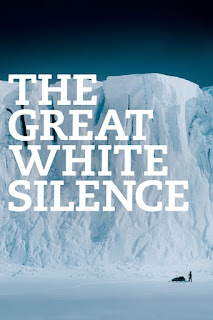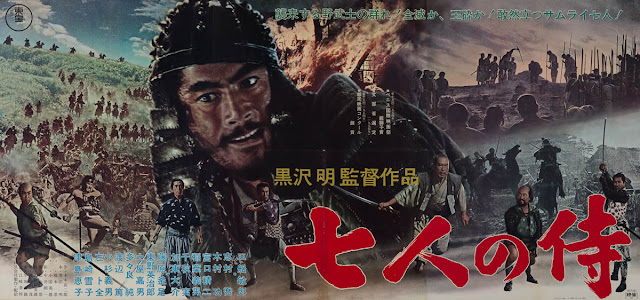Silent-ember: The Great White Silence (Dir. Herbert Ponting, 1h 48, 1924)
One must regard the film not just as the great narrator, the teller of fantastical stories, but as the great documenter. From the medium's very birth, from the early films of the Lumière brothers,
as much to document the world around them, as it is to entertain, to the 500 hours of footage uploaded to YouTube every minute, the film is as much a tool of chronicle as it is one of imagination. Silent cinema, of course,
is no exception. Early Soviet cinema is, for example, dominated by the documentary, from the experimental Man With a Movie Camera (1929) to the controversially verité Earth (1930), whilst the now dated Nanuk of the North (1922) and the lost Saved from the Titanic (1912), show the blurring of lines between pure documentation and pure entertainment, something that continues to this day to be a consideration and, occasionally, a stumbling
block to the genre.
No film captures the possibilities of the early documentary like The Great White Silence. Shot by Ponting, the official photographer for the expedition, Silence records the opening months of the Terra Nova expedition, that would eventually end in the death of Captain Scott and those who followed him to the South Pole. It is a film that, even by modern
standards tells the tale in remarkable detail, from everyday life on the Terra Nova to the conditions the crew endured on their journey south, to remarkable, and at times groundbreaking footage of the South Pole itself. Part
reportage, part travelogue, the film takes on the role of memorial as Ponting's film breaks from the quintet that carried on into the heart of the great white silence, the continent that would eventually claim their lives,
a final journey told in empathetic, if typically Imperial British terms.
Ponting himself, thus, is a remarkable figure; originally a photographer, working in areas as far flung as Japan and Spain, and a fellow of
the Royal Geographical Society from 1905, he becomes, by reputation, a master narrator, turning mere collections of photographs into a story, and is promptly hired to become the very first professional photographer to travel
on an Antarctic expedition. Along with his stills camera, and revolutionary autochrome plates, thus producing some of the first colour images ever of Antarctica, Ponting brings the Cinematograph (another Lumière invention),
a more portable version of the bulky Edison Kinetograph, but only capable of taking short films, and requiring hand-cranking. Ponting's films, in essence, were intended for the return of Scott, intended to form the centrepiece
of lecture tours and further fundraising.
Via intertitles, and carefully tinted film (a not uncommon, but expensive and time-consuming process that certainly conveys a series of moods and smartly segments
the film), Ponting constructs his narrative; we are taken from the Terra Nova's base in New Zealand, down into the Southern Ocean, and onto the ice itself. Not only is the film itself impressive; for a film shot and developed in one of the most inhospitable regions of the world, and transported back to England over several thousand miles in an era where film preservation was an inexact science, it is visually
remarkable, but the film is essentially the expedition in-the-round. The film depicts its crew, including Oates and Scott, at work and play, from crew haircuts, to them passing the time boxing and, once they reach Antarctica
itself, preparing for the expedition south, passing the time playing, in one of the film's most beautifully, and most typically British moments, football. The film travels through moments great-the arrival of the Terra Nova to Antarctica, the departure of Scott and his team south, and mundane-from feeding of dogs to ski-training.
This
jostles up against what-presumably-must be some of the very first film of not just Antarctica itself-great sections of the film depict towering icebergs, ice floes, and the brutally inhospitable interior, but its wildlife,
from penguins and seals to killer whales. This is, after all, a film that superbly matches the scale, the grandeur of the ice, the towering ice cliffs that crane out of shot, dwarfing the tiny figure of Ponting, and his fellow
explorers, Whilst Nanook may have mixed its wildlife documentary with constructed drama two years prior, with Ponting's film, there is no such muddling of fact and fiction, the nature
sections an unquestionable forerunner of wildlife and nature documentaries, as a medium. This veracity, this sense of documenting everything, no matter how trivial it must have seemed, gives the film a remarkably timeless quality for its opening two thirds.
Here, with Ponting turning for home aboard Terra Nova, the
film turns, in a word, hagiographic, as it documents the Scott expedition's journey south. The last true elements of footage are Scott heading off into the great white silence, and from here, the film turns to maps, to
early animation, to reconstruct events that Ponting himself was not witness to. The intertitles remain matter of fact, footage taken from earlier in the expedition now standing in for its
latter stages, as crevasses, the death of the ponies, and the unimaginable scale of the continent begin to take their toll. History, hindsight, have not been altogether kind to Scott, painting him either as the doomed tragic
hero, hopelessly outmatched by the efficiency of the better equipped Amundsen, or, more recently, as an arrogant avatar for Empire and King, fatally assuming that Antarctica would be as easy a conquest as the rest of the world.
Perhaps
what The Great White Silence does, more than anything, is to redress this balance by reminding us that, no matter what light the expedition is cast in, tragic or egotistical, Scott, Oates,
Bowers, Evans and Wilson were men. Scott's final diary entry ends, not that of resignation, nor thwarted ambition, but with the words: "For God's sake look after our people". We see them among these people,
among their shipmates, we spend time with them, even in recreated moments. The film's modern soundtrack, at the loss of Evans, breaks from its ambience, to positively turn requiem, a sole voice adding words, sound, into
the great white silence itself, as the expedition draws to its doomed, inevitable end. We feel for Ponting, who cannot help but break from passive observer to chronicle the deaths of people he spent entire years of his life
with. Whilst tempered by the period, the fact that Scott's tragic heroism acted as inspiration for countless British soldiers in the trenches, one cannot help but be moved.
Nearly a century on, The Great White Silence marks a moment in cinema, not just in bringing the last journey of one of Britain's greatest heroes
to countless picture and lecture halls, via the very images the expedition one day hoped to commemorate itself with, not just an important document in understanding the impact of Scott's expedition on the British psyche
with one of the leading surviving pieces of media, but remains a remarkable documentary on the limits of human ambition, a nigh encyclopedic documentation of one of the first visits to one of the last great unknown, matching
the scale of the polar ice with the ambition of one of its most famous explorers:
Rating: Must See.
Like articles like this? Want them up to a week early? Why not support me on my Patreon from just £1/$1.20 a month! https://www.patreon.com/AFootandAHalfPerSecond

.jpg)

Comments
Post a Comment